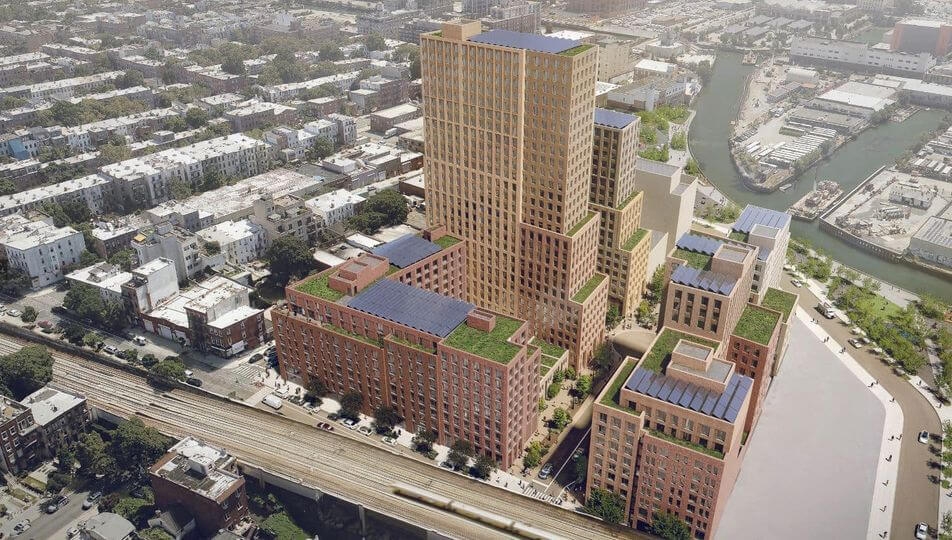It has been a busy year for the Department of City Planning (DCP). The city has seemed weighed down with budget cuts, constant media attention on crime in the subways, and sexual assault allegations against the mayor, and yet DCP has continued its work, publishing Principles of Good Urban Design for New York City (a tool for creating better neighborhoods) and pushing to reform zoning across the city. The agency’s City of Yes project, which includes three citywide initiatives that would create zoning reform, is in various stages of approval.
DCP’s three initiatives include City of Yes for Carbon Neutrality, Economic Opportunity, and Housing Opportunity. The first initiative, Carbon Neutrality, was passed by the City Council last December. The second, for Economic Opportunity, was approved by the City Planning Commission on March 6 and will now go to the City Council for a hearing and final vote. Now, the final initiative for Housing Opportunity is taking front and center.
New York City is facing a housing crisis, with a 1.4 percent rental vacancy rate and more than half of New York households being “rent burdened” (defined as paying over one third of their gross income for rent). City of Yes for Housing Opportunity attempts to change zoning so that it is possible to add a small amount of housing to every neighborhood. The proposal includes several elements, including: Universal Affordability Preference, a tool that would allow buildings to add at least 20% more housing if the additional units are affordable; residential conversions, updating rules to allow for commercial buildings built before 1990 (rather than 1961) to be converted into housing; town center zoning, bringing back former policies that allowed housing above businesses on commercial streets in low-density areas; the removal of parking mandates, rolling back the agency’s parking requirements for new developments; accessory dwelling units, allowing homeowners to create additional housing such as basement apartments and garage conversions; transit-oriented development, re-legalizing 3-5 story apartment buildings on large lots on wide streets or corners within a half-mile of public transit; and campuses, allowing residential, faith-based, or other campuses with underused spaces to more easily add new buildings that could bring funding for repairs, new facilities, or housing.
On March 27, the agency held a public information session on Zoom about the zoning proposal, and focused on “missing middle” housing types. After the short presentation, DCP representatives Veronica Brown and John Mangin masterfully answered questions from attendees. Questions came from residents of every borough (interestingly, all but one question came from attendees who were also community board members, though they were not representing their communities on the call). An attendee from Staten Island was concerned that removing parking mandates would make parking more difficult. The agency noted that Buffalo, Austin, and other more car-centric jurisdictions have successfully removed parking mandates; in neighborhoods where parking spots are critical or highly valued, developers will usually still choose to include parking when creating housing.
Many of the attendees were concerned about more housing changing their communities—from concerns about “three story monstrosities” to fears about new housing in areas already dealing with flooding. One attendee even asked how much more housing the city can have and if there were a limit. In response to the idea of simply not building more housing, Mangin underlined the critical nature of housing: “As planners, as people who care about the future of the city, that’s just a really scary idea.” He explained that by capping housing while the economy continues to grow, there is more and more pressure on limited housing stock, meaning that people are priced out of the city. The result? A dystopian city that is no longer one of opportunity for immigrants, those in lower incomes, young graduates, etc. “This is a city of immense opportunity—if we want to preserve that at a fundamental level, and make it livable for those who aren’t rich, finding out ways to do this is a priority.” In a touching monologue, one of the final attendees explained that, as a father, it was far more critical to him that his son is able to afford to live in New York City when he grows up, than it is that his neighborhood’s character remain unchanged.
During the call, representatives from DCP noted that a full environmental impact statement will be released in the coming weeks. The next public information session about City of Yes for Housing Opportunity will be held on Zoom on April 17 at 6:30pm.
Discover more from Red Hook Star-Revue
Subscribe to get the latest posts sent to your email.











